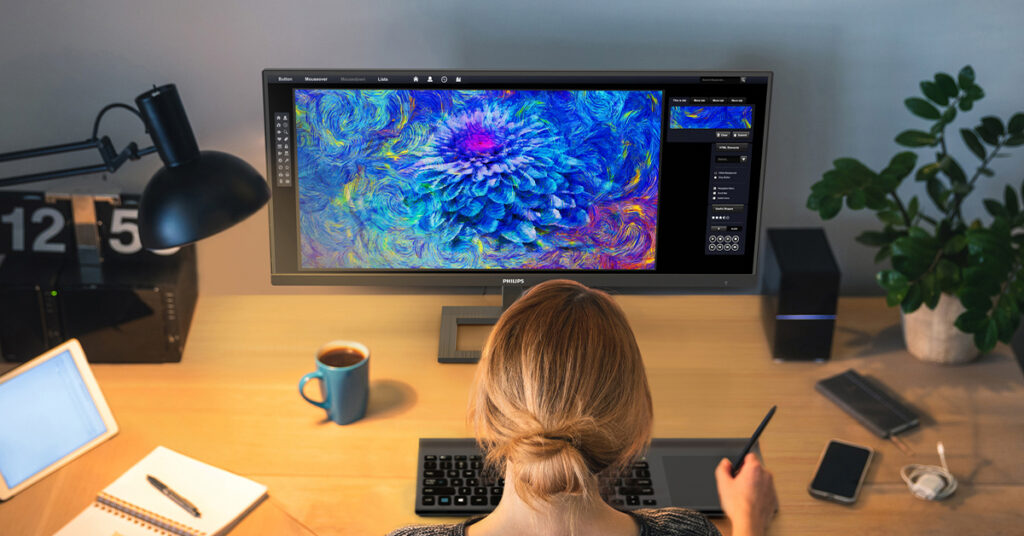Features that make images come alive

It comes as no surprise that more and more devices come with progressively better visuals displays, and monitors are no exceptions. Here are few elements of monitors that provide richer visual experiences.
IPS, VA and Wide Viewing Angles
Unlike standard TN panels, IPS and VA displays gives accurate and crisp images with vivid colors, making it ideal for photos, films, and web browsing, but also for professional applications that always demand color accuracy and consistent brightness. Many of the Philips monitors come with IPS or VA technologies while giving extra-wide viewing angels of 178/178 degrees, making it possible to view the display from almost any angle with no distortion.
Size and Resolution
Higher resolution means more pixels on the display and greater detail, an essential feature for professional users such as graphic designer, CAD designers and architects, and an appreciated plus for any other user. For office environment, high resolution monitors ensure comfortable viewing experience with the delivery of crisp images and clear texts. Some of the highest resolutions available for monitors are QHD (2560 x 1440 pixels, four times the first HD panels), UltraWide Quad HD (3440 x 1440 pixels) and Ultra HD or 4K resolution (3840 x 2160 pixels, or four times the resolution of a Full HD display). The Philips 346E2CUAE is a great example of UltraWide Quad HD display, a panoramic view with high-density pixel to bring out the clarity and details each photographer expects from a high-performance monitor. On the other hand, the Philips 329P1H sports an IPS panels to deliver 4K UHD resolution for images that really pop!
DisplayHDR and Ultra Wide-Color
HDR stands for “High Dynamic Range” and refers to a technology that enhances an image’s dynamic range, underlining the perceptible difference between bright and dark regions and providing lifelike images while preserving precise details. Ultra Wide-Color Technology delivers a wider spectrum of colors thanks to a wider “color gamut”: this results in deeper blues, more natural-looking greens, and vivid reds, bringing media entertainment, images, and even productivity to life. An example of these jaw dropping colors? Check out the above-mentioned Philips 288E2A. if you really want widest color gamut available, all nuances, the deepest blacks, and the most consistent visualization – then the Philips 328P6VUBREB is your next best friend.
Features that look out for you
For working in front of a computer, for hours, eyes need to feel as comfortable as possible – hence some features included in many Philips Monitors, specifically designed for easy-on-the-eye productivity. Due to the way brightness is controlled on LED-backlit screens, some users experience flicker on their screen which causes eye fatigue. Philips Flicker-Free technology applies a new solution to regulate brightness and reduce flicker for more comfortable viewing. Moreover, studies have shown that even shortwave-length blue light rays from LED displays can cause eye damage and affect vision over time. Developed for wellbeing, the Philips LowBlue Mode setting uses a smart software technology to reduce this harmful shortwave blue light. Lastly but not least, EasyRead mode ensures a paper-like reading experience.
Which features have you used to enhance the quality of your images on a monitor? Let us know!
